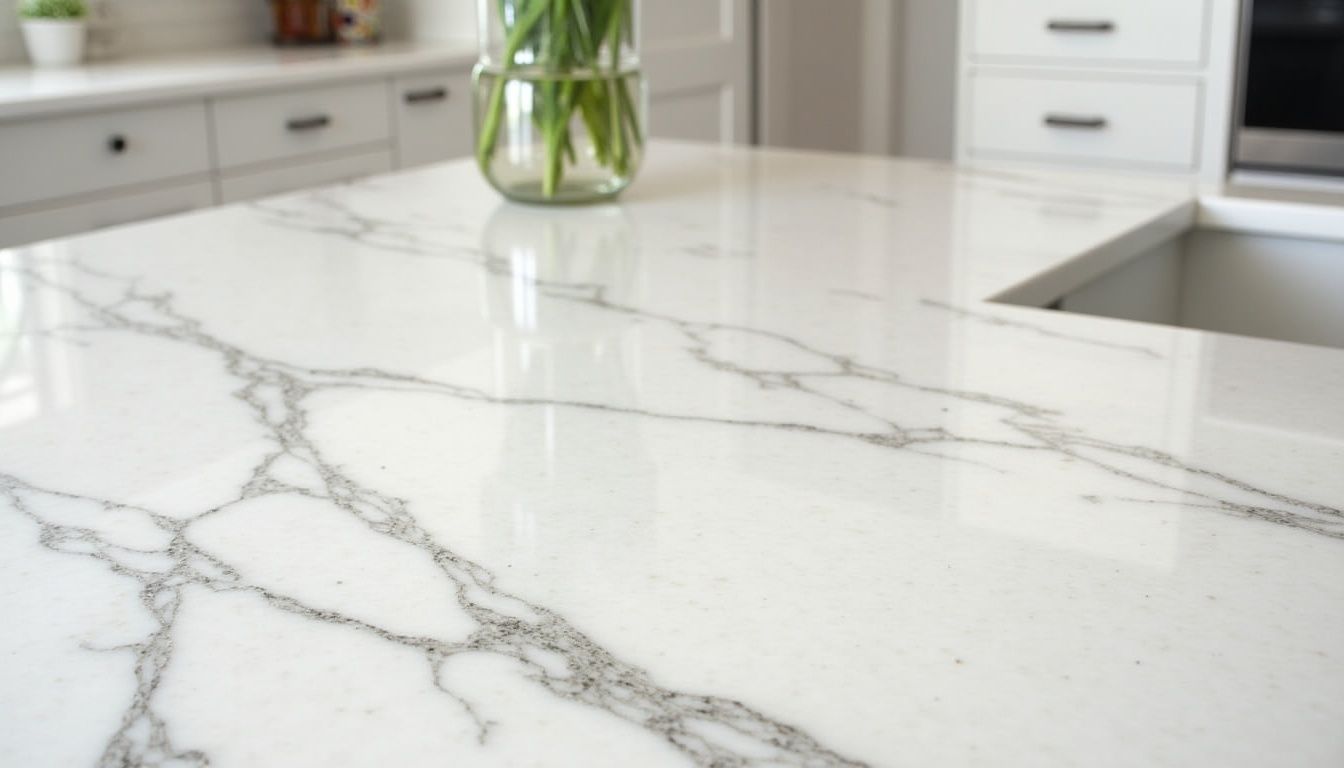- Silica Free News
- Posts
- How to Save Thousands on Your Quartz Countertop Investment
How to Save Thousands on Your Quartz Countertop Investment

Kitchen renovations consistently rank among the most expensive home improvement projects, with countertops often representing the single largest material investment. Quartz surfaces have surged in popularity, capturing nearly 40% of the countertop market, but homeowners frequently face sticker shock when they receive their first quote.
The difference between a budget-conscious quartz installation and an expensive disaster often comes down to preparation and strategic decision-making. Smart homeowners who understand the cost structure can easily save 30-40% on their total investment without sacrificing quality or aesthetics.

That attractive "$60 per square foot" advertised price represents just the beginning of your actual expense. Material costs form only one component of a complex pricing structure that includes fabrication labor, customization fees, and ancillary services that can double your initial budget.
The major cost categories that blindside unprepared homeowners include:
Labor expenses that add 30-50% to material costs, with complex kitchen layouts pushing this to 60%
Customization upcharges including edge profiles ($10-20 per linear foot) and cutouts for sinks, cooktops, and outlets ($50-200 each) •
Full-height backsplashes requiring separate measurement, fabrication, and installation
Overlooked essentials like demolition, disposal, delivery fees, and plumbing services ($500-1,500 total)
A kitchen requiring extensive customization can see labor costs reach 60% of the material price. Each cutout for sinks, cooktops, outlets, and faucets carries individual charges. Full-height backsplashes, while stunning, require separate measurement, fabrication, and installation costs.
The most overlooked expenses include demolition and disposal of existing countertops, delivery fees, and plumbing disconnection/reconnection services. These "small" items often catch unprepared homeowners off guard with significant additional costs.

Master Your Budget Before Setting Foot in a Showroom
Successful cost control begins with comprehensive planning. Calculate your total square footage needs accurately, including overhangs and any specialty areas. This prevents the common mistake of underestimating material requirements and facing expensive change orders.
Target a specific quality tier early in your planning process. Mid-grade quartz provides the optimal balance of aesthetics, durability, and price for most residential applications. Premium grades often carry 50-100% price premiums for marginal performance improvements that most homeowners won't notice in daily use.
Build a realistic contingency fund of 10-15% of your subtotal. Unexpected issues like cabinet releveling, electrical modifications, or structural adjustments occur frequently during installations. Having funds allocated prevents project delays and forced compromises.
Research specific brands and designs that match your aesthetic goals. Understanding exact product names and availability helps you compare quotes accurately and avoid the common trap of comparing different quality levels across contractors.

Strategic Selection Strategies That Slash Costs
Material selection represents your greatest opportunity for significant savings. Understanding where to invest and where to economize can dramatically impact your final costs without compromising quality or appearance.
Key money-saving strategies include:
Grade optimization – Mid-grade quartz delivers excellent performance at 20-40% below premium options
Standard finish selection – Polished surfaces hide wear better and typically carry no upcharge versus specialty finishes ($5-15/sq ft extra)
Smart edge choices – Straight, eased, or beveled edges come standard while ornate profiles add $15-30 per linear foot
Local sourcing benefits – Regional fabricators offer lower labor rates and reduced shipping costs
Design simplification – Standard slab sizes (56" x 120") avoid expensive seaming and reduce waste by 15-25%
Focus on brands with proven track records rather than paying premiums for marketing or newest releases. Specialty finishes like leather, honed, or concrete-look surfaces require more maintenance while adding significant costs.
Edge profile selection significantly impacts your total cost. Ornate profiles like ogee, waterfall, or custom shapes can add substantial expense to your project. Local suppliers often maintain relationships with nearby quarries or distributors, passing transportation savings to customers.
Design simplification can yield substantial savings for budget-conscious homeowners. Kitchens accommodated by standard slab sizes avoid expensive seaming and waste charges. Planning your layout around these dimensions provides immediate cost benefits.
Installation Cost Control That Actually Works
Quote comparison requires systematic methodology. Request detailed, itemized estimates from at least three reputable fabricator-installers. Generic "per square foot installed" quotes hide important differences in labor rates, cutout charges, and included services.
Timing your project strategically can reduce costs significantly. Many fabricators offer winter discounts during slower months. Avoiding peak renovation seasons (spring and early summer) can yield 10-20% savings on labor costs.
Template and measurement fees vary widely between contractors. Some include these services in their base price, while others charge $200-500 separately. Understanding what each quote includes prevents comparing different service levels unknowingly.
Warranty coverage varies dramatically between installers. Premium pricing should include comprehensive coverage for both materials and workmanship. Cheaper quotes often exclude important protections, potentially costing thousands if problems arise.

The Low-Silica Opportunity Smart Buyers Should Know
The countertop industry is experiencing significant transformation due to health concerns surrounding traditional high-silica quartz. New low-silica and silica-free alternatives are entering the market, creating opportunities for cost-conscious consumers.
Brands like Cosentino's Silestone XM (containing less than 10% silica) and Caesarstone's Mineral line offer reduced silica content while maintaining traditional quartz performance. These alternatives sometimes carry lower prices than premium traditional options while providing additional safety benefits for fabrication workers.
Completely silica-free options include solid surface materials, paper composites, and recycled glass surfaces. While aesthetically different from quartz, these alternatives often cost 20-40% less while offering unique benefits like repairability and environmental advantages.
Understanding these emerging options expands your selection beyond traditional quartz, potentially identifying materials that better match both your aesthetic preferences and budget constraints.
Your Action Plan for Maximum Savings
Start with accurate measurements and realistic budget planning that includes all potential expenses. Target mid-grade materials with standard finishes and edge profiles for optimal value. Source locally when possible to reduce transportation costs and support regional businesses.
Obtain at least three detailed, itemized quotes for accurate comparison. Time your project during slower seasons when possible. Consider emerging low-silica alternatives that may offer better value propositions than traditional options.